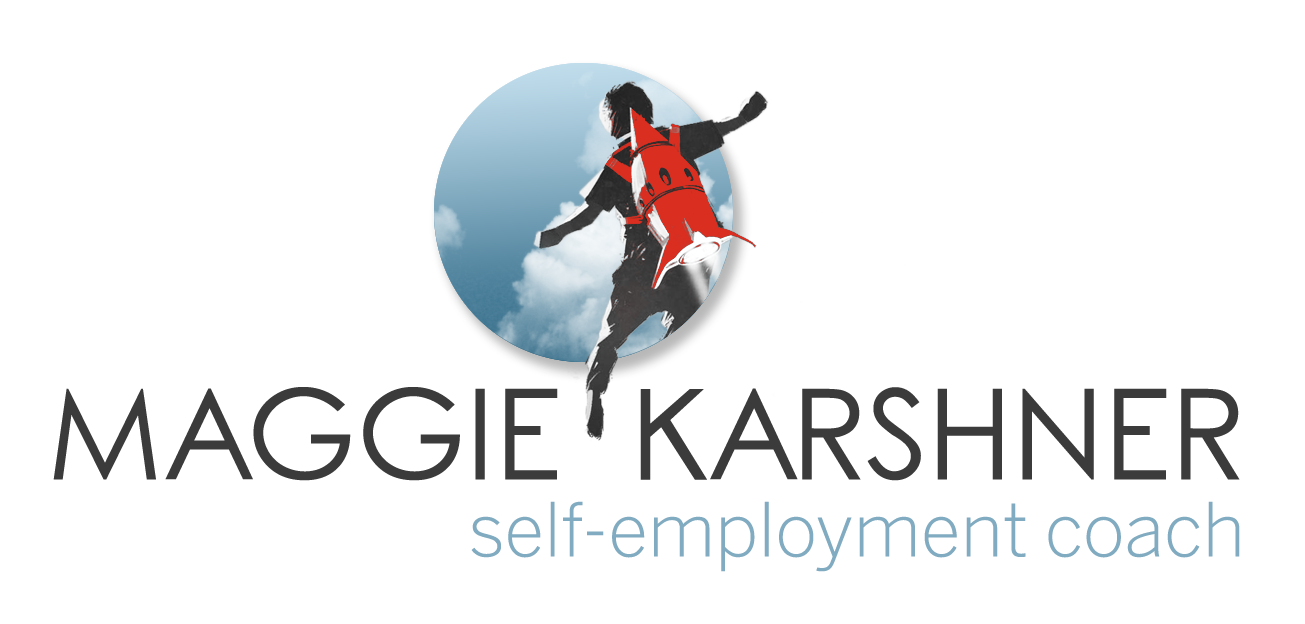Afraid of Self-Employment Failure? Develop a Plan!
/In my first session with many clients they reveal that they don't feel like they have a plan. Having a plan for your business is super important. For most self-employed businesses a traditional, formal business plan might be over kill, but having a plan is key. While there are many parts to a business plan, it’s the transition that seems to get a lot of aspiring self-employed stuck. It’s like monkey bars, you want to know where the rungs are up ahead and that they’re not made of thorns and pain. Since I’m a habitual planner, I thought it was time that I share a generic game plan for launching a self-employed business. My intention is that you’ll customize this to fit your unique circumstances and what you want for your business. This general plan offers a smooth, cautious transition.
A Note on Goals and Deadlines
With any planning it's good to be making "S.M.A.R.T" goals (e.g. Specific, Measurable, Achievable, Relevant and Time-bound.) And, I notice folks run into some challenges with the nuances of “time-bound” and “achievable”
I’ve noticed that sometimes folks are relatively arbitrary about the time-bound aspect of a goal. A deadline should be more than just “I think I can do it by then,” though that is a good thing to consider. Instead, dig into why a deadlines is when it is. If your goal is: "I'll have 5 clients by May 1st," then I'd hope that you looked at your finances and noticed that by May 1st you'd need to be switching to plan B in order to maintain your financial independence. Figure out what the limiting factor is and create deadlines that actually mean something.
I’ve also noticed that goals often are things we don’t actually have control over. The “I’ll have 5 clients by May 1st” for example; you don’t actually have control over that. You could have two dozen leads and none of them become clients, and it wouldn’t be for want of trying! Knowing your deadlines like “I’ll run out of money if I don’t have 5 clients by May 1st” is important, but when it comes to “achievable” goals, it’s important that you have full control over it. An example of what you do have full control over would be “reach out to 24 business contacts before May 1st.” With that as part of the goal, you’ll know that if you don’t land 5 clients it won’t be because you didn’t work hard enough.
Plan B
When we get real about goals and deadlines sometimes we start getting scared; what if it doesn’t work and I don’t achieve my goal? Well, that’s where plan B comes in. Beyond the actions you have control over, not all business ideas are winners. Even if it is a winning idea, you might not enjoy the process of being a business owner, and then what?!
Have an escape route and know when it's absolutely time to use it. My go-to plan B is to get a job. If there's a position you've already held and could live off the income, that's usually a great place to start. Job hunts where you're exceedingly qualified for a position tend to be a more sure-bet, so your plan B shouldn't be career advancing, it should be easy to land and earn you sufficient income to squeak by. Once you've done that, you can regroup and figure out what career advancement looks like, whether that's regrouping on your business, or applying for more desirable jobs.
On to Plan A!
Enough pre-amble, here’s my 4 phase plan!
Phase 1: make a plan
Great! You're here! Let's make a plan! Write your plan down, and come back to it on a regular basis. At the end of this article I offer a free worksheet for just this purpose.
Phase 2: side-hustle
When you have an idea for a business it can be risky to leave your day job and launch it full force. Instead, you have the option to "test drive" it as a side-hustle. Carve time out of your non-working hours to better understand your ideal client, come up with a pricing structure, and develop your website. If you do client-based work, take on a client or two a week that you see in evenings or weekends. Rent an office part-time, or meet with them remotely using something like Skype or Google Hangouts.
This affords many benefits. You're building your online and real world presence. Building a presence can take time to develop, and in the mean time you're still earning an income. In fact, if you can be saving money for the next phase, that will serve you well!
You'll know when you're ready to move on to the next phase when you're feeling busy and bringing in a steady flow of extra cash.
Phase 3: 50/50; part-time, part-time
Once your business starts gaining some traction, you'll find yourself stretched for time. The next configuration is to do your business half-time, and work for someone else half-time. This step can be the trickiest since part-time employed work typically doesn't pay as well per hour as you may have been used to, nor does it often come with health benefits.
This phase needs to strike a balance between belt-tightening and actually sustainable. It won't be an arrangement that you'll want to do for forever, but it should be something that you can get by on (maybe with the inclusion of your savings) for an extended period of time. In the last phase you verified that your business is a viable idea, now the only thing holding you back is having a long enough "runway" of savings to get it off the ground.
Phase 4: full-time self-employed
On the one hand, you have arrived! On the other hand, this is still a leap. It's unlikely you'll have enough income from your business to leave your "day-job" without a care. The trajectory here is to have enough income to skate by, and be busy enough that you can't afford to keep the under-paid part-time employed work. You might still need to lean on savings, and that’s ok. You’ll have left this phase when you’re earning your full desired income from your own business activities.
Write Your Plan Down
That was the high-level stuff about how planning works, but you also need the real-world applicable stuff too. I’ve developed a worksheet to help you concretize your transition plan. Enter your name and email below and I’ll send you the PDF. In this worksheet you’ll have spaces to describe what you plan to be doing during each phase, your savings strategy during each phase, and how you’ll know you’re done with each phase.
If you need more help with your transition plan, feel free to reach out for help!





